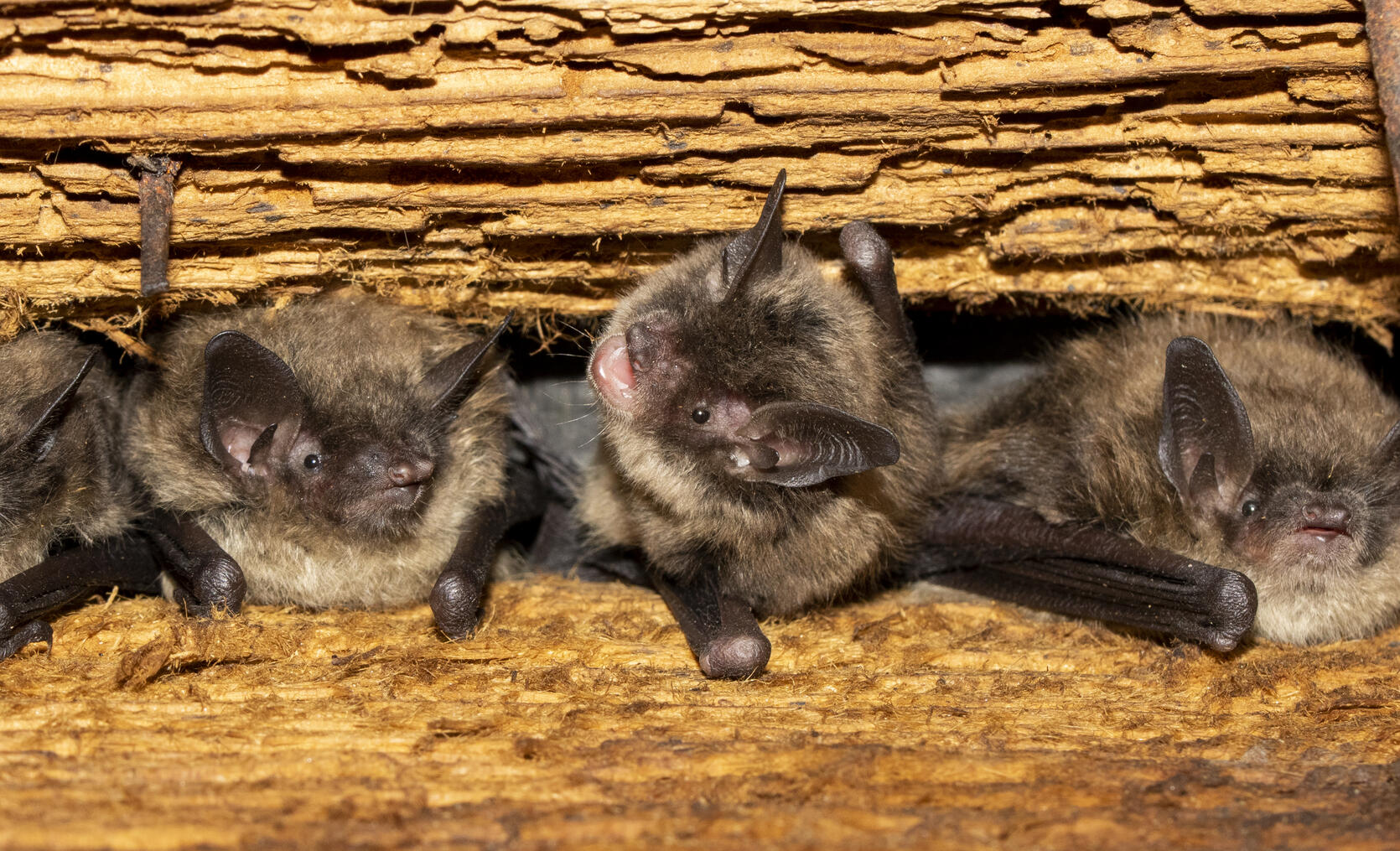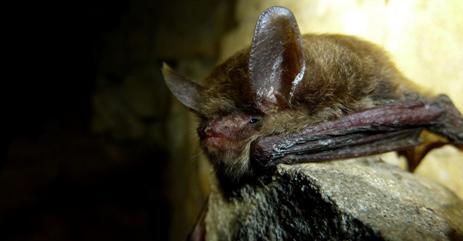- Division of Fisheries and Wildlife
- MassWildlife's Natural Heritage & Endangered Species Program
Media Contact
Media Contact, MassWildlife

You know what's scary? Losing our endangered species! Bat week starts October 24 and is designed to raise awareness about the need for bat conservation and to celebrate the role of bats in nature.
The Commonwealth is home to 9 species of bats and 8 of those are listed under the Massachusetts Endangered Species Act (MESA). Bats have long been underappreciated and they need our help. Populations have declined significantly over the last few decades due to disease and human activity. What we think we know about these fascinating creatures is often riddled with myths and misconceptions. Dispelling irrational fears about bats is the first step towards appreciating these amazing creatures. Together, let’s debunk some common bat myths.
Bat myths
Myth: Bats are blind.
Fact: Bats can see as well as other mammals, and some bats can see up to three times better than humans. At night, most bats rely on echolocation to find prey in the dark by sending out ultrasonic sound waves and listening for echoes. Therefore, bats essentially ‘see’ with both their eyes and ears!
Myth: All bats suck blood.
Fact: Most bats are insect-eaters and they consume large numbers of pesky mosquitoes. Only 3 of the world's 1,400 bat species are vampire bats. Vampire bats live in Mexico, Central America, and South America and lick blood from animals like cattle.
Myth: Bats are dirty.
Fact: Bats are very clean and groom themselves regularly like cats to keep their fur soft and silky. Some bats even groom each other!
Myth: Bats attack people and get tangled in your hair.
Fact: Bats are afraid of people and avoid them. Bat echolocation is highly sophisticated and enables them to detect obstacles as fine as human hair, therefore easily avoiding your head. If a bat gets close to a human, it’s usually because they are curious about insects that are naturally attracted to people.
Myth: All bats have rabies.
Fact: Any mammal can contract rabies, but less than one-half of 1% of bats carry rabies. Rabies is a dreaded disease, but fortunately, it is extremely rare in bats. With rigorous rabies vaccination programs in place in the United States, there are only about two human rabies cases per year, and these are now most often from exposure to wildlife. The frequency of human rabies cases associated with bats in the United States and Canada is estimated to be about one case per 143 million people per year. Far more people die from dog bites, bee stings, or lightning strikes than rabies infections caused by bats. Fewer than 40 people in the United States are known to have contracted rabies from bats during the past 40 years.
Myth: Bats are just flying mice. (The German word for bat is even “Fledermaus,” which translates to flying mouse.)
Fact: Although bats are small like most rodents, they are classified as their own unique order of mammals called Chiroptera, which means “hand-wing” in Greek. Bats are more closely related to humans than they are to mice. Bats also do not nest, chew, or claw their way into structures like mice do. Also, most mice and other rodents only live for 1–3 years. One little brown bat is known to have lived in the wild for 33 years! Furthermore, female bats of most bat species give birth to only one pup per year, whereas mice give birth to many offspring multiple times per year.
The moral of the story: Don’t let bat myths spook you! Contrary to popular belief, bats are friendly, useful creatures. Help spread the message that these remarkable animals are truly beneficial to the health of our environment.
How you can help
- Educate yourself and others about bats by learning about the variety of threats they are facing in Massachusetts and across the country.
- Help provide safe, warm roosting sites for females to raise their young. Create a bat-friendly backyard by leaving old, dead, or dying trees standing to provide natural roost sites. Or, if you’re handy, learn how to build and install a bat house.
- Support bats and other rare species in Massachusetts by donating to MassWildlife’s Natural Heritage and Endangered Species Program.
- If you must exclude or evict bats from your home, ensure the process is safe and humane by following MassWildlife’s recommendations found in the Massachusetts Homeowner's Guide to Bats.
- Be a citizen scientist. If there is a colony of 10 or more bats on your property, use our online form to report it. Colonies may be found in trees, buildings, attics, barns, sheds, or other outbuildings. This information will be used to help conserve the state’s endangered population of little brown bats.



